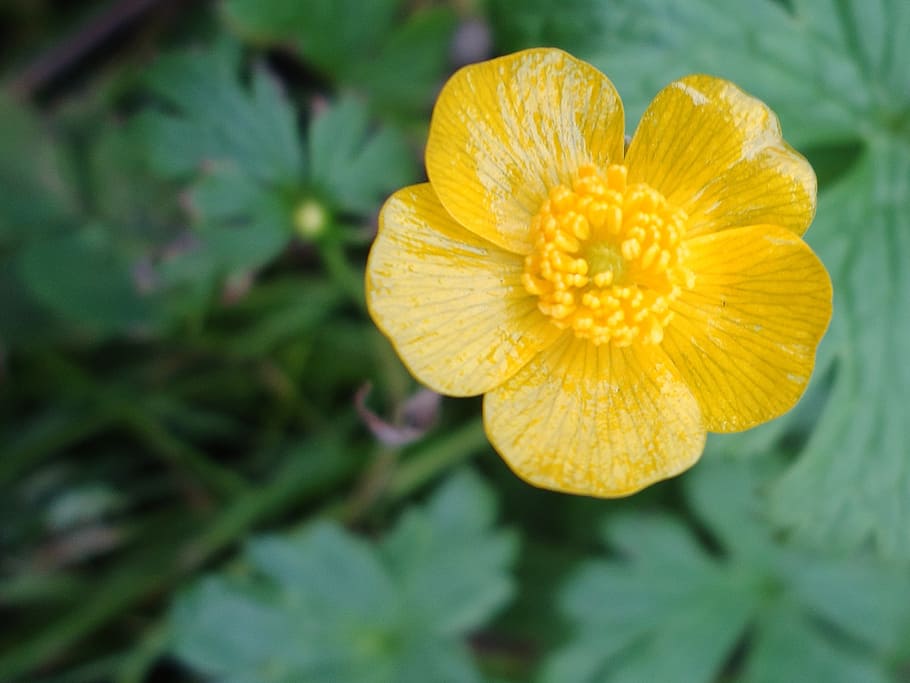Difference Between Monocarpellary and Multicarpellary
Table of Contents
The key difference between monocarpellary and multicarpellary is that monocarpellary gynoecium has only one carpel while multicarpellary gynoecium has numerous carpels.
The flower is the reproductive organ of angiosperms. It has different parts. Androecium and gynoecium are important parts of them. The gynoecium is the female reproductive organ, while androecium is the male part. Gynoecium can have one or more carpels. Carpel is the basic unit of gynoecium. It consists of three parts as stigma, stele and ovary. Stigma is the terminal receptive part, while stele is the stalk of the carpel. The ovary is the basal swollen part of the carpel which has ovules. If the gynoecium of a flower has one carpel, we call it monocarpellary. In contrast, if the gynoecium of a flower has many carpels, we call it multicarpellary.
CONTENTS
1. Overview and Key Difference
2. What is Monocarpellary
3. What is Multicarpellary
4. Similarities Between Monocarpellary and Multicarpellary
5. Side by Side Comparison – Monocarpellary vs Multicarpellary in Tabular Form
6. Summary
What is Monocarpellary?
Monocarpellary refers to a gynoecium consisting of only one carpel. In other words, gynoecium has a single carpel in the monocarpellary state. Leguminosae is a family that bears monocarpellary flowers. Moreover, mango is a plant that has monocarpellary flowers. Furthermore, coconut also possesses a monocarpellary flower. Simple fruits generally develop from the monocarpellary flower or syncarpous ovary.

Figure 01: Monocarpellary Flower
Figure 01 illustrates the flower of a pea. The gynoecium of flower pea is monocarpellary. Moreover, Avocado flower is also monocarpellary.
What is Multicarpellary?
Multicarpellary gynoecium has numerous carpels. Therefore, the gynoecium consists of many carpels. Each carpel is complete and has all three parts. In some plant genera, we can see a modification from multicarpellary state to pseudo-monocarpellary state. When there are many distinct carpels that are not joined together, the ovary is said to be apocarpous.

Figure 02: Flower with an Apocarpous Gynoecium
Aggregate fruits develop from multicarpellary and apocarpous pistil. Moreover, multicarpellary ovary can be syncarpous, superior or inferior. In the syncarpous state, all carpels are fused together. In contrast, in the apocarpous state, carpels lie free from each other. Multicarpellary flowers can be seen in the Malvaceae family of plants.
What are the Similarities Between Monocarpellary and Multicarpellary?
- Monocarpellary and multicarpellary are two types of gynoecia based on the number of carpels they contain.
- They are flower parts.
- They are unique to angiosperms.
What is the Difference Between Monocarpellary and Multicarpellary?
Monocarpellary flowers have one carpel in their gynoecium. In contrast, multicarpellary flowers have numerous carpels in their gynoecium. So, this is the key difference between monocarpellary and multicarpellary. Also, multicarpellary gynoecium can be apocarpous or syncarpous while monocarpellary gynoecium is always monocarpous. Thus, this is another difference between monocarpellary and multicarpellary.
Moreover, monocarpellary flowers can be seen in family Leguminosae, mango and avocado while multicarpellary flowers can be seen in family Malvaceae, tulip, and strawberry.

Summary – Monocarpellary vs Multicarpellary
The carpel is the basic unit of gynoecium. It is the female reproductive structure consisting of three parts as stigma, stele and ovary. Moreover, carpel is the precursor organ to the fruit in angiosperms. Gynoecium may have one or more carpels. Especially, monocarpellary gynoecium has only one carpel while multicarpellary gynoecium has many carpels. So, this is the key difference between monocarpellary and multicarpellary. Family Fabaceae and Avocado have monocarpellary flowers while family Malvaceae, strawberry and tulip have multicarpellary flowers.
Reference:
1. “Pistil: Female Reproductive Organ Of Flowering Plants”. Your Article Library, 2020, Available here.
Image Courtesy:
1. “Image from page 452 of “Plant life in Alpine Switzerland; being an account in simple language of the natural history of Alpine plants” (1910)” By Internet Archive Book Images (No known copyright restrictions) via Flickr
2. “Buttercup, flower, yellow, flowering plant, plant, freshness, beauty in nature, inflorescence, flower head, petal” (CC0) via Pxfuel
ncG1vNJzZmivp6x7pbXFn5yrnZ6YsqOx07CcnqZemLyue8OinZ%2Bdopq7pLGMm5ytr5Wau265zqemnJmipbKtuMCrsGaZnpl6rsHLraCcmaKlsq24wKuwaA%3D%3D